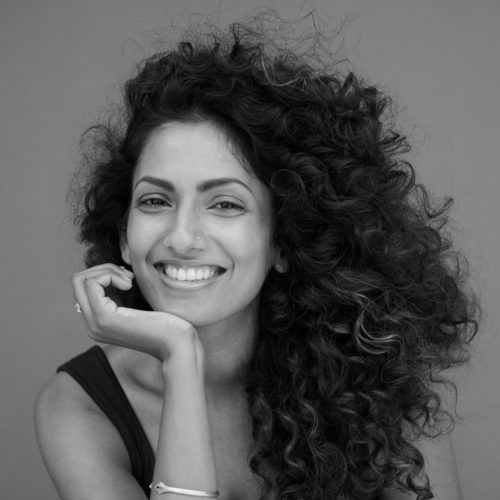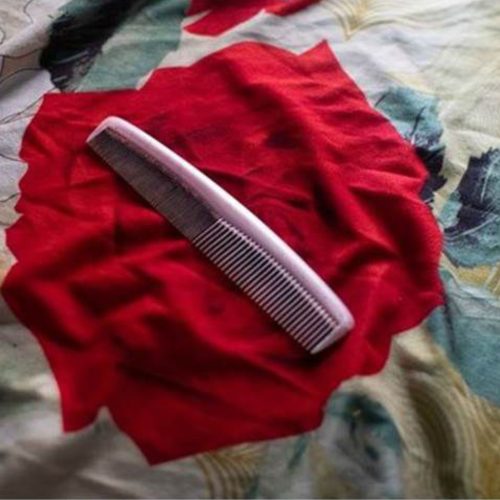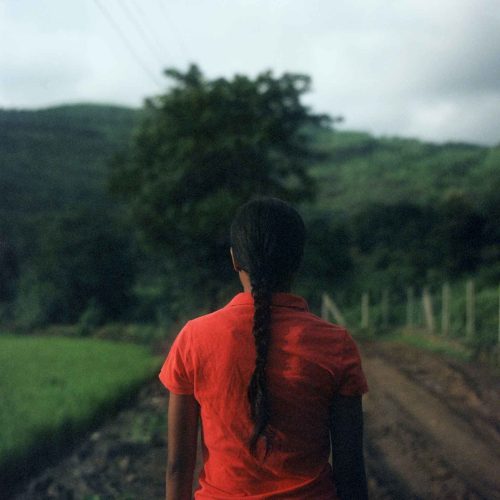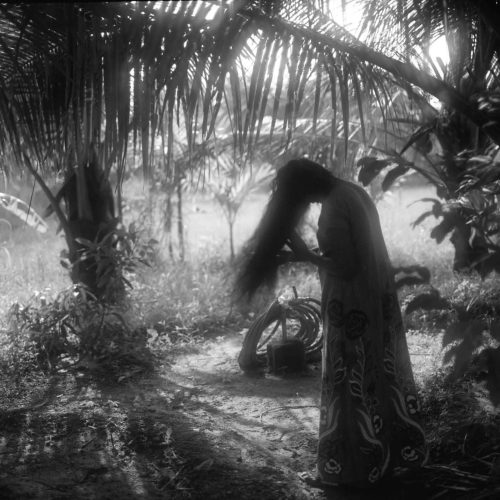- Culture & Travel
“The Smell of Pears Soap and Talcum Powder Remind Me of My Grandmother…”
- ByNandini Bhalla

Courtesy: Pinterest
Contemporary photographer Sheetal Mallar made heads turn as a supermodel for 20 years, and in her next act, she has turned the lens on some of her favourite things… Her childhood interest in photography, as well as her favourite subjects, which include her grandmother and mother.
Recently, Sheetal exhibited her works titled Braided at Art Musings Gallery in Mumbai, where she showcased her images of the rituals of hairmaking that are passed on from mother to daughter…intimate mmoments where conversations are born, relationships are forged, and memories are made. In a special conversation with The Word., Sheetal speaks about her memories, nostalgia and loss, and the self-published book that accompanies the exhibition.

Nandini Bhalla: From being a supermodel, how did you decide to become a photographer?
Sheetal Mallar: “My journey as a model spanned around 20 years, and before quitting, I began wondering what I’d like the second chapter of my life to be… I was always interested in visual arts; I’ve been drawing and painting since I was a kid and always carried a camera with me. In fact, I was always the person who’d take pictures in my group.
One day, I just picked up the camera and began creating small projects and stories. That was 12 years ago…and it’s been a great journey. Earlier, I did more commercial work, and my personal projects were there on the side.”
NB: What is the process you follow for each project?
SM: “I always work on long-term projects. They run side-by-side, and I often keep revisit them… This way, they start taking on a life of their own. Over time, I begin to understand why I am making a particular work, what it means to me, and what direction it’s taking. This has been my life for a while now, and I’m so glad that I have released my first book.”
NB: Tell us a bit more about the theme, which is centred around mothers and daughters.
SM: “I was already in a headspace of wanting to reconnect to that intimacy I shared with my mother when I was a child. As we grow up, we travel so much, we’re out a lot, and so much of our relationship exists in our memories. We hold onto some memories and think about them because in real time, we don’t get to spend so much time with the core people in our lives. When we’re younger, we tend to be all over the place. One day, it occurred to me that 20 whole years had passed! Where did 20 years go?
I was feeling this desire to reconnect for a long time. So, I began to document people and things to hold onto, as they that were changing so fast… My mom and grandma are ageing, and I felt like I’d lost so much time. I used to think that one day, perhaps, I’ll do something with my love for photography…and that’s where this was born from. I never quite knew why I was creating this corpus, other than the fact that I wanted to make a family album at some point. Only in the last few years did I begin to fully understand why this work is so important for me, and why I’d want to put it out there in a book. I also decided to self-publish this because I wanted it to be so personal. At the end of the day, a memoirs or a family-album-book is not a money-making project. So, I decided to make it more authentic and sincere, in my own way.”

NB: Who all have you featured in this series?
SM: “Some of the women in this series are my own family members and cousins, and others are some young girls I know. I went back to the village or to rural spaces that brought to mind a younger version of my granny running in the field…that feisty, little thing could have easily been her, you know?
I try to create images of what I’ve imagined may grandmother’s childhood to be like, from all the stories I’ve heard of her childhood, of her and her friends climbing trees and playing…”
NB: Tell us a bit about your relationship with your grandmother.
SM: “Amma was my only grandparent who lived with us in Bombay, because we are originally from the south and the rest of the family was in Karnataka. As a family, we all grew close to my granny because she was with us for 28 years. My relationship with her was beautiful, and I felt like she and I were quite similar…she was very progressive, very cool. She’d just shoot her mouth and say exactly what she thought.”
NB: Tell us about your realisation about time passing by, and how we don’t spend enough time with the women we love the most.
SM: “The thing is, we all really enjoy those few moments we get with your loved ones, and then most of the time, we just spend time living in those memories. I think it’s a real struggle in our generation, and I’m sure in the next ones, too…life is so fast, it’s like everything is on high speed.
Obviously, when you’re younger, you don’t even realise it. It’s only when you get a bit older, like in your late 30s or 40s, do you start feeling it because you really understand the transience of it all… How time is passing by, and that people won’t be around anymore. I think this realisation comes when you begin to see the signs of people ageing, and you understand it’s never going to be the same.
Everyone feels that, and it makes you want to press pause and get back everything you’ve lost and make more memories and more experiences, because so many times we’re living off the older memories. I always think I should go for more holidays, or that we should go for a swim together… It’s constant.”

NB: There’s an underlying sense loss in some of these pictures. Is that what you are referring to here?
SM: “I feel like I’m talking about all the experiences we could have had. Maybe I should have made more time…there’s a sense that I’ve lost out on some amazing experiences that everyone else had. When I go back to my family, they tell me that I missed out because I was away. All thEse things kind of build up, and at some point, you realise that you have lost out on so many amazing, small experiences, which is something you really don’t want. Because these things actually matter. So there’s that loss, and then, there’s the obvious pain of actually losing a grandparent or somebody who’s really close to you.”
NB: For this project, you are using analog on expired film…tell us about this decision.
SM: “I did that for some of the images. I enjoy mixing up mediums because every medium offers you something different. Digital is amazing because it’s quick. With analog, things are slower, you take your time to create. Using expired film was not planned…a friend had all this expired film, and they were going to throw it away. So I decided to experiment with it.
I think the beauty of personal projects is that you can take your time and do things at ease. There’s no one to judge. And if you make a mistake, it’s fine because it’s your own work and you can always redo things. Another thing with film is that I don’t know how these images will eventually turn out. They’re like beautiful accidents, especially some of of the images I shot in my hometown, which I wanted to feel like a memory or a story that’s in a dream. It worked beautifully well with all the contrast and dreaminess with the overexposed parts.”

NB: And have you shown these pictures to anybody in the family? If yes, what were their reactions?
SM: “Yes, I showed them to my mom, throughout. In fact, she was a part of the whole process. And she’s always very moved by them because she and my grandmother are so close. We’d always get into a long conversation about some story or the other, and she’d be quite surprised that I still remembered those things. That’s always a beautiful process.
When I was writing the book, I began questioning how it should be. Because I wanted for the viewer to make the story their own. That is why I decided not to overstate, I didn’t want to over-explain. Instead, I thought it would be really nice if the book was turned into a a dialogue between a mother and a daughter, where they are, sort of, reminiscing.”
NB: Through the pictures, I picked up a sense of longing and seeking, a deep sense of nostalgia… Were these emotions part of your creation process?
SM: “Yes, there was definitely nostalgia for the little things. When I shoot objects of daily life, like saris or nighties, they’re so evocative and have such a place in my memory. Even if I see them anywhere else, they’ll evoke all those emotions. That’s also true for hairstyles, the smell of lavender talc, or Pears Soap…they are such a quintessential grandmother- and mother-thing!
I also associated a particular floral print with my grandmother, and I wanted to incorporate that within the book. So, I cut out a piece of fabric in the shape of the nightie and stuck it on the page…these little feelings are very hard to convey because the tactile elements in a book help evoke that object. I hope, at least.”
NB: There’s also one picture of a comb…
SM: “I wanted to talk about the braiding rituals that create a bond between mothers and daughters, and the comb is a reference to the hairstyle in work. For instance, when the hair is braided for school, the oiling, the combing… It’s an intimate time you spend with your mother every day for years, it’s a kind of ritual, it means a lot more than just braiding the hair. It’s all the intimate time you have with your mother, and so many conversation are born there. You only think about it much later in life, and you miss these moments of intimacy that you share with your mom…the time you had as children, every single day, for nearly 10 years while in school.”
NB: Do you hope that the future generations from your family will look at this book as a family tree to turn back to?
SM: “I hope so… That would be beautiful, if they can still remember all the little things of everyday that mean so much…”
NB: Is there any one picture that really speaks to you?
SM: “I really love the one where my granny is making her hair, because I have such lovely memories of her doing her hair up when she was younger…she used to add fake hair to make a judah [hair bun]. And then, one day, she decided she had had enough of the judah, so she began just combing her beautiful, white hair and setting them simply.”
All images: Courtesy Sheetal Mallar
READ MORE
- The Word. and Bumble Celebrated An Evening Of Scent, Sparks, and Mutual Connections
- How The Bicester Collection Quietly Became the Fashion Insider’s Best-Kept Shopping Secret
- Gauri Khan, On Her New Experience Centre In Delhi, Her Favourite Spot At Home, and Great Décor Advice
- With IRTH’s New Store in Noida, The Brands Adds To Its Joyful Delights
- Ranbir Kapoor’s New Perfume, ARKS Day, Reminds Him of His Childhood





